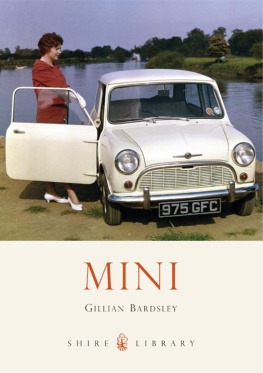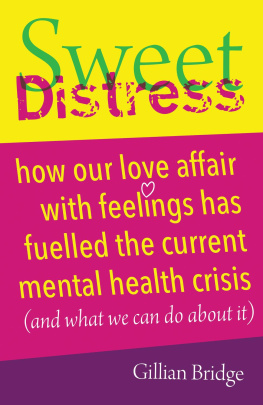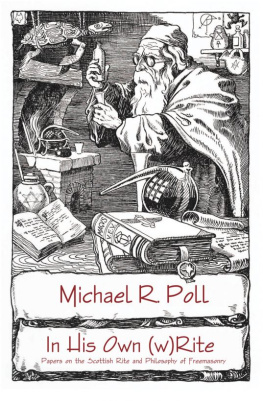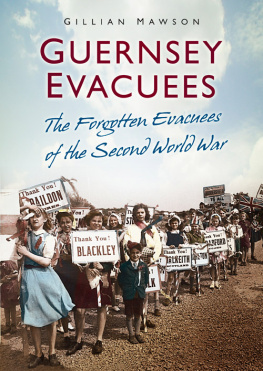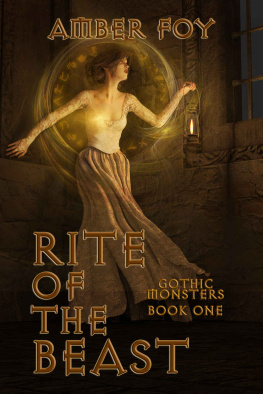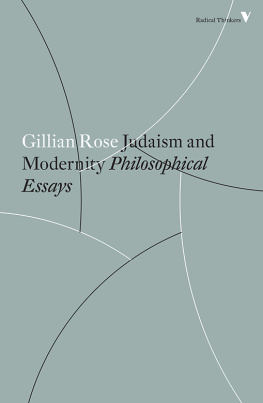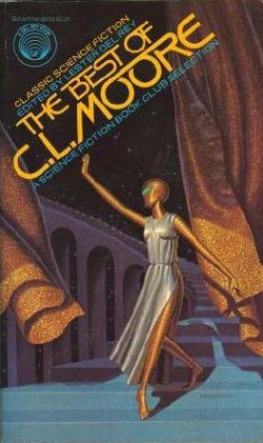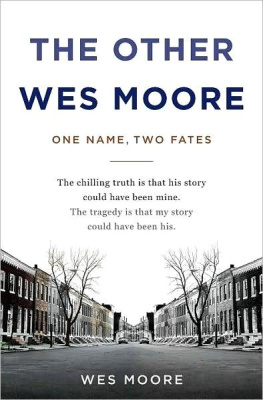Gillian Moore - The Rite of Spring
Here you can read online Gillian Moore - The Rite of Spring full text of the book (entire story) in english for free. Download pdf and epub, get meaning, cover and reviews about this ebook. year: 2019, publisher: Head of Zeus, genre: Detective and thriller. Description of the work, (preface) as well as reviews are available. Best literature library LitArk.com created for fans of good reading and offers a wide selection of genres:
Romance novel
Science fiction
Adventure
Detective
Science
History
Home and family
Prose
Art
Politics
Computer
Non-fiction
Religion
Business
Children
Humor
Choose a favorite category and find really read worthwhile books. Enjoy immersion in the world of imagination, feel the emotions of the characters or learn something new for yourself, make an fascinating discovery.
- Book:The Rite of Spring
- Author:
- Publisher:Head of Zeus
- Genre:
- Year:2019
- Rating:4 / 5
- Favourites:Add to favourites
- Your mark:
- 80
- 1
- 2
- 3
- 4
- 5
The Rite of Spring: summary, description and annotation
We offer to read an annotation, description, summary or preface (depends on what the author of the book "The Rite of Spring" wrote himself). If you haven't found the necessary information about the book — write in the comments, we will try to find it.
The Rite of Spring — read online for free the complete book (whole text) full work
Below is the text of the book, divided by pages. System saving the place of the last page read, allows you to conveniently read the book "The Rite of Spring" online for free, without having to search again every time where you left off. Put a bookmark, and you can go to the page where you finished reading at any time.
Font size:
Interval:
Bookmark:

AN APOLLO BOOK
www.headofzeus.com
 |
On 29 May 1913, a brilliantly innovative ballet by Diaghilevs Ballets Russes company, with choreography by Vaslav Nijinsky, received its premiere at the Thtre des Champs-Elyses in Paris. The first-night audience for Igor Stravinskys Le sacre du printemps (The Rite of Spring) included such avant-garde artists as Jean Cocteau, Claude Debussy and Maurice Ravel, alongside theatregoers of more conservative temperament.
When the curtain rose on a cast of frenziedly stamping dancers, to an accompaniment of pounding chords on the strings, a near-riot erupted, ensuring that the events of the evening would enter the mythology of modernism. Stravinskys score contained many novel features for the time, but it was undoubtedly the dancing that triggered the mayhem.
Gillian Moore explores the wider cultural climate and the individual artistic sensibility that gave birth to The Rite of Spring. As well as tracing the course of the Russian artistic revival, and the mania it triggered in Paris during the 1900s, she analyses the music of the Rite itself in thrilling detail, explaining how a scandalous novelty of 1913 became one of the most influential musical works of the modern era its impact evident in film music, jazz and the more adventurous corners of rock.
For my family

Johan Persson/Royal Opera House/ArenaPAL
A favourite anecdote about Igor Stravinsky concerns a dinner in honour of his eightieth birthday hosted by President and Mrs Kennedy at the White House on 18 June 1962. The evening was a rather awkward, formal affair. Most of the guests had little knowledge of Stravinskys music, although a few of his friends had been invited to make him feel more relaxed. The composer-conductor Leonard Bernstein was there, as was the composer Nicolas Nabokov and Stravinskys record producer Goddard Lieberson. The event was taking place at the height of the Cold War and Stravinsky was under no illusion about the political agenda behind his invitation. The administration knew that he was planning to visit his native Russia later that year, for the first time since 1914. War and revolution had kept him away for nearly five decades. His adopted homeland wanted to pre-empt the Soviet Union and claim him as its own. At the White House dinner, Stravinsky took full advantage of the freely flowing alcohol to lubricate the social wheels and he clearly warmed to the Kennedys themselves. At the end of the evening, as the rather drunk composer was waved off in his car by the presidential couple, he turned to his wife Vera and said, Nice kids.
It takes self-confidence to refer to the president of the United States and the first lady as nice kids. But Stravinsky had earned it. He lived between 1882 and 1971. Along with a small handful of cultural figures luminaries who distinguished themselves in other artistic areas, including his near contemporaries Pablo Picasso, Charlie Chaplin, Coco Chanel, Alfred Hitchcock and Louis Armstrong he was one of the individuals who helped define culture in what might be termed the thick end of the twentieth century. He became famous just as the century began. The course of his long life was deeply affected by its major conflicts and political convulsions. Thanks to twentieth-century technology his music spread across the globe. Stravinsky had an enormous influence on the soundtrack of the century, not just in its classical concert halls but in its cinemas, rock venues and jazz clubs. His musical kleptomania he is, after all, one of several people to whom the aphorism lesser artists borrow; great artists steal has, rightly or wrongly, but repeatedly, been attributed meant that his music absorbed and transformed cultural trends and movements across seven decades while remaining unmistakably and triumphantly itself.

Vera Stravinsky, John F. Kennedy, Jackie Kennedy and Igor Stravinsky in Washington, 1962.
Keystone/Getty Images
Stravinsky earned his status as a twentieth-century giant at least in part because, one hot spring night in May 1913, three weeks before his thirty-first birthday, he gave the century one of its mythic cultural moments in the Paris premiere of Le Sacre du printemps The Rite of Spring . The scandal of the Rite s riotous first performance has become part of the folklore of modernism, and is one of the most documented artistic events of all time. The moment was not Stravinskys alone. In the spirit of Sergey Diaghilevs Ballets Russes, the company that brought it to the stage, The Rite of Spring was a Gesamtkunstwerk , a total work of art: a ballet with a scenario, sets and costumes created by the archaeologist and painter Nicholas Roerich and new choreography by the Ballets Russes sensational star dancer Vaslav Nijinsky. The ballet rode the current Parisian craze for Russianism with its imagined ancient Slavic ritual, the sacrifice of a young girl to the god of spring.
That The Rite of Spring appeared in the year 1913 has only added to the power of its mythology. It was a major year for modernism, a time when art, literature and music were wrestling with a world that seemed on the brink of chaos and fragmentation. This was the year in which Gertrude Stein pulled language apart and first told us that Rose is a rose is a rose is a rose and Marcel Proust published the first instalment of la recherche du temps perdu ( In Search of Lost Time ). Cubism was five years old but Picasso and Georges Braque were continuing to present a fragmented version of the world with multiple simultaneous perspectives. Sonia Delaunays Electric Prisms paintings from 1913 embraced the speed and energy of technology while, in Russia, Natalia Goncharovas rayonist paintings depicted reality fractured through rays of light. The year 1913 marked the dawn of modernism in the American art world with the International Exhibition of Modern Art at the Armory, New York. Marcel Duchamps Futuristic Nude Descending the Staircase, No. 2 created the biggest stir, with one critic describing it as the explosion of a shingle factory. In 1913 the Viennese architect Adolf Loos first published his essay Ornament and Crime, a manifesto for the pared-back modern architecture of a brutal century.
This was also a period of dissent in the arts, and the premiere of The Rite of Spring was not the first occasion of a high-profile riot at a musical performance in 1913. At the hallowed Musikverein in Vienna on 31 March an event that became known as the Skandalkonzert took place. The music of Schoenberg, Berg and Webern had recently cut loose from the moorings of conventional tonality and this fracture with the past proved too much for the audience. Protests drowned out the sound of the orchestra and the concert had to be stopped. And, on 9 March in the Constanzi Theatre in Rome, Luigi Russolo, a painter and composer of the Futurist group, attended a concert of new music that ended in fist and cane fighting between the conservative and progressive factions of the audience. As a reaction, Russolo published a short pamphlet entitled The Art of Noises in which he argued for a music in which the sounds of twentieth-century machines, aeroplanes and motorcars would be incorporated into orchestras. This was, after all, the year in which Henry Ford introduced the first motorized assembly line to produce the Model T and Roland Garros flew from the south of France to Tunisia in the first flight across the Mediterranean.
Font size:
Interval:
Bookmark:
Similar books «The Rite of Spring»
Look at similar books to The Rite of Spring. We have selected literature similar in name and meaning in the hope of providing readers with more options to find new, interesting, not yet read works.
Discussion, reviews of the book The Rite of Spring and just readers' own opinions. Leave your comments, write what you think about the work, its meaning or the main characters. Specify what exactly you liked and what you didn't like, and why you think so.


